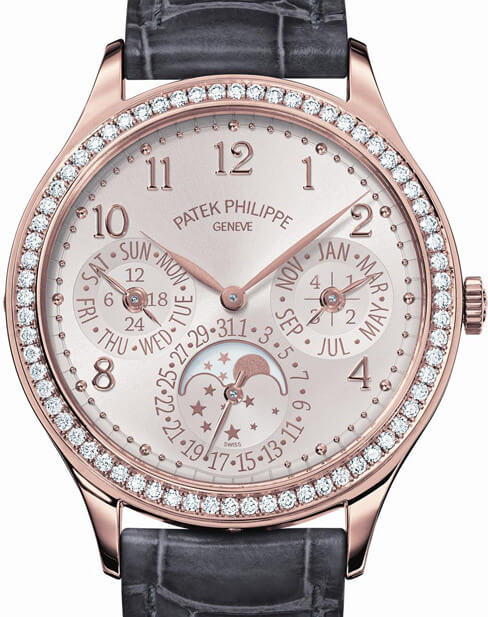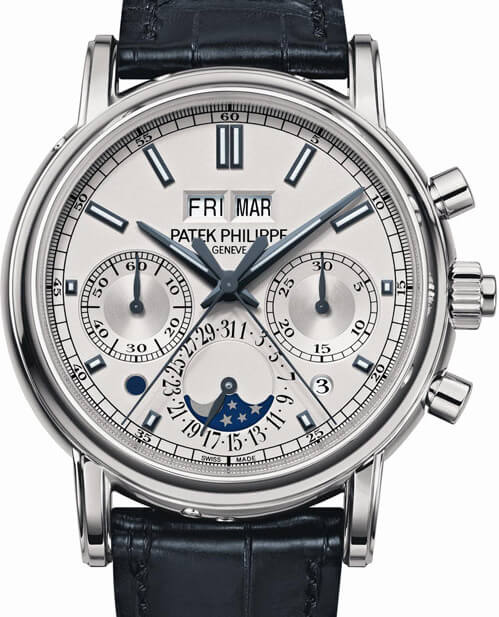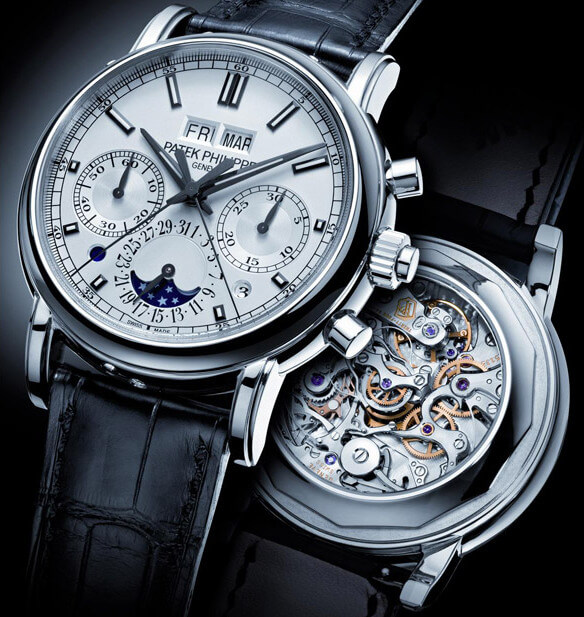They say women are complicated. A trait Patek Philippe encourages. The family-owned firm came to Baselworld 2012 with a new grande complication timepiece for women. The Ladies First perpetual calendar ref. 7140 is the first of its kind in the Geneva-based Manufacture’s women’s collections. It echoes the company’s second headliner for the week, the split-seconds chronograph and perpetual calendar ref. 5204 which completes the line-up of chronographs driven by the CH 29-535 PS in-house base movement.

"Women have been ready for a long time"
“There is absolutely no reason why we should make complicated watches for men and not for women. Women have been ready for a long time; retailers have been the ones to convince!” Thierry Stern, President of Patek Philippe, has no doubt in his mind. The cliché of women left perplex by mechanical movements, preferring gem-studded timepieces driven by quartz, has had its day. Since 2009 the company has practiced what it preaches, with an impressive range of complicated watches for women from Travel Time models with dual time zone to a grande complication World Time indicating 24 time zones and incorporating a minute-repeater and split-seconds chronograph, not to mention an annual calendar and classic column-wheel chronographs.
Spurred on by the success of this direction, Patek Philippe this year presents its first perpetual calendar for women. The extra-thin Calibre 240 Q, which incorporates an off-centre mini-rotor in 22k gold, resides inside a classic round Calatrava case in 18k rose gold, set with 68 flawless Top Wesselton diamonds (approximately 0.68 carats). This perpetual calendar movement has a mechanical memory of four years or 1,461 days, and adjusts to months of varying length: 31, 30 or 28 days and the 29 days of February in a leap year. Hence it will need to be manually adjusted by just one day, 88 years from now, as the Gregorian calendar omits the 29th February in the century year of 2100.
The last piece in the puzzle
While Patek Philippe proves its affinity with women, a new chronograph proves that men are by no means forgotten. Prior to the development of the proprietary CH 29-535 PS base movement, Patek Philippe’s classic chronographs were driven by an exclusive Nouvelle Lémania 27-70 movement, and proposed with three different degrees of complication: a simple chronograph, a chronograph with perpetual calendar, and a split-seconds chronograph with perpetual calendar. The Manufacture retained this three-tier structure when it launched references 5170 (in 2010) and 5270 (in 2011). The new split-seconds chronograph with perpetual calendar reference 5204 completes the suite.
The hand-wound base movement with column-wheel and horizontal clutch, already the subject of six patents, has been adapted to accommodate a highly innovative split-seconds mechanism and the perpetual calendar module. Like the base calibre, this new CHR 29-535 PS Q movement has a frequency of 28,800 vib/hour (4 Hz), an instantaneous 30-minuter counter, a continuous seconds subdial, and a power reserve of 65 hours.
Patek Philippe S.A. is comfortably settled at the Manufacture in Plan-les-Ouates, its administrative headquarters. This is also where it conducts research into new technologies, develops new mechanisms, manufactures movement parts, and carries out all its watchmaking activities from design to delivery, including after-sales services and restoration. The company also has case and bracelet workshops in Perly, the Patek Philippe Museum in Geneva, and Patek Philippe Salons where its timepieces are sold in Geneva, Paris and London. It has eight partner companies, located outside the canton of Geneva. They are Calame (cases), Poli-Art (polishing), SHG (gem-setting), Patek Philippe SA La Chaux-de-Fonds, Cadrans Fluckiger in Saint-Imier (dials), Allaine (casing of movements) located in Alle, Betakron (finishing, decoration, steel parts) in the Jura, and Patek Philippe La Vallée SA (watchmaking, fine watchmaking and restoration) in Le Brassus.
Some figures
1,500 employees in Geneva
1,800 employees in Switzerland
2,000 employees worldwide
200 qualified watchmakers
460 points of sale in 70 countries
19 base calibres (17 for wristwatches and 2 for pocket watches)
over 50 movement references
over 10,000 components
annual production using 15 million components
over 400 cutting-edge production and precision machines
annual production of 45,000 watches (35,000 mechanical watches and 10,000 quartz ladies’ watches)
Article published in BIPH















